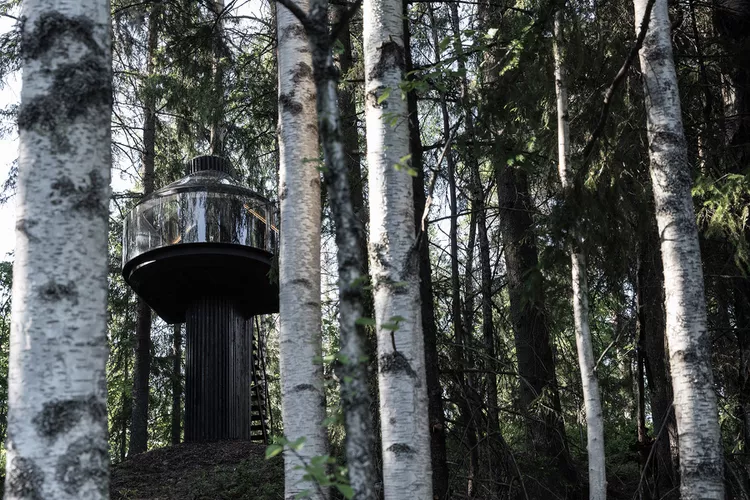Summary
A Sustainable Trip to Finland
In an effort for a truly sustainable journey, my stay in Finland may have been the ultimate eco-friendly experience.
Arriving in Helsinki in late afternoon, I drove the ultra-sleek and modern Polestar 2 electric vehicle to a remote village where my accommodations—a secret treehouse—awaited me. (So secret that I wasn’t even given an address, just the coordinates that were already plugged into my vehicle).
Exploring Koja Treehouse
After about an hour’s drive, I arrived at the treehouse called Koja—the Swedish word for hut or den. I climbed up to what would be my home for the night. Measuring approximately 99 square feet, and suspended about 19 feet in the air, the structure featured floor-to-ceiling windows, with its trunk at the center, yet managed to feel cozy thanks to its carpeting and comfy bed.
:max_bytes(150000):strip_icc():format(webp)/TAL-koja-treehouse-KOJA0922-3e25e695d10d44589e18f0a38b25aae6.jpg)
Koja exists as a celebration of Finnish design and is part of Polestar’s sustainability initiative to help its guests feel immersed in nature. Being surrounded by greenery, with no Wi-Fi and only my occasional neighbors being deer and frogs, this goal was undeniably accomplished.
The whole concept came to life thanks to a progress-themed design contest in 2021, aptly known as the Polestar Design Contest, where the designer of Koja, Kristian Talvitie, received an honorable mention.
“Most designers look at the design from a user perspective. I also look at things from the environment’s perspective,” Talvitie said in a press release. His design was chosen because of its consideration of the climate crisis, along with Polestar’s design aesthetic and sustainability values.
The stay was almost reminiscent of family camping trips I took when I was younger, as I had to climb out of my cozy space to use an outhouse.
However, one major difference between Koja and your average tent campsite is the electricity, which allows the treehouse to be illuminated at night. The accommodations sleep two on twin beds that are seatbelted (with the same seatbelts as the Polestar car) to the wall when not in use. The final detail—a Nespresso maker—reveals how seriously the Finns take their coffee.
The Local Culture and Art Scene
Located on the outskirts of the village of Fiskars, about 88 kilometers (54 miles) from Helsinki, the area is known for its sustainable tourism initiatives, including nature conservation and the use of recycled products in construction, as well as a vibrant art scene. The year-round population of 600 practically doubles in the summer as artists migrate from the cities to the villages. Fiskars was previously a steel-producing town, renowned for quality products like world-famous Fiskars scissors and knives.
:max_bytes(150000):strip_icc():format(webp)/TAL-electric-scooter-KOJA0922-4f3cd56879b34048b63a93d0454f0a95.jpg)
The village, originally known for manufacturing, has since transformed into a hub for artistic culture, especially during the annual Art Biennial. The exhibition showcased three main exhibits, with Koja playing a role within it.
Each exhibit represented a different artistic theme. The first took an interpretive look into the five senses with interactive installations, while the second examined “knots and knits,” ranging from simple knot-tying to elaborate woven rugs. The third focused on tiny houses featuring Scandinavian design.
“I know Koja is nearby,” one exhibit volunteer mentioned to me in passing. “I live just outside of town, but I haven’t been able to find it yet,” she added. This reflects the hidden charm of Koja.
Although Koja was built this year to be part of the biennial art exhibit, it is not currently open to the public.
Final Thoughts on the Experience
While Koja is not yet available for general public rental, there are other accommodations in Fiskars, like Hotel Tegel, where I enjoyed a traditional Finnish breakfast after my stay at Koja.
To fully experience both the natural beauty and city vibes, visitors can rent a Polestar 2 from Hertz (Polestar is a Swedish car jointly owned by Volvo), which I quickly came to love.
While indulging in your stay, savor delicious coffee and embrace the availability of free oat milk. If you dare, try the regional favorite: salty (black) licorice. Finally, if you’re curious about the location of Koja, consider taking the lesser-known trail. You might just be closer than you think.




